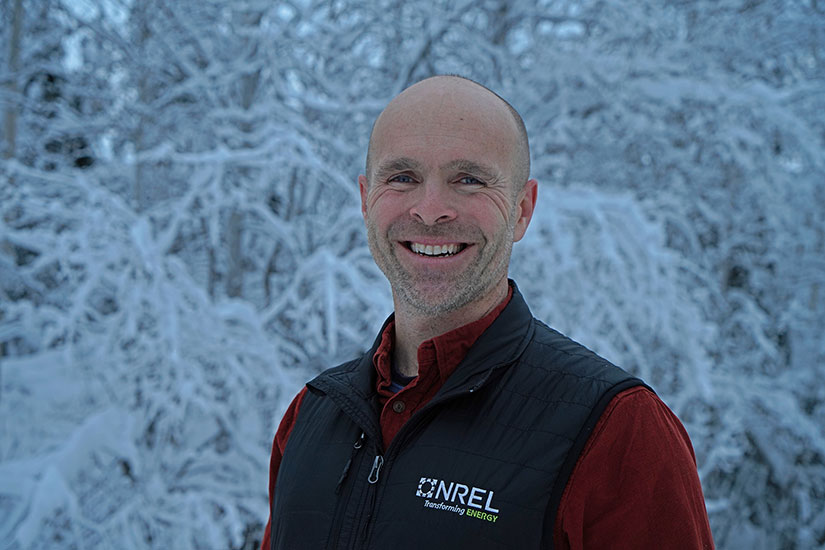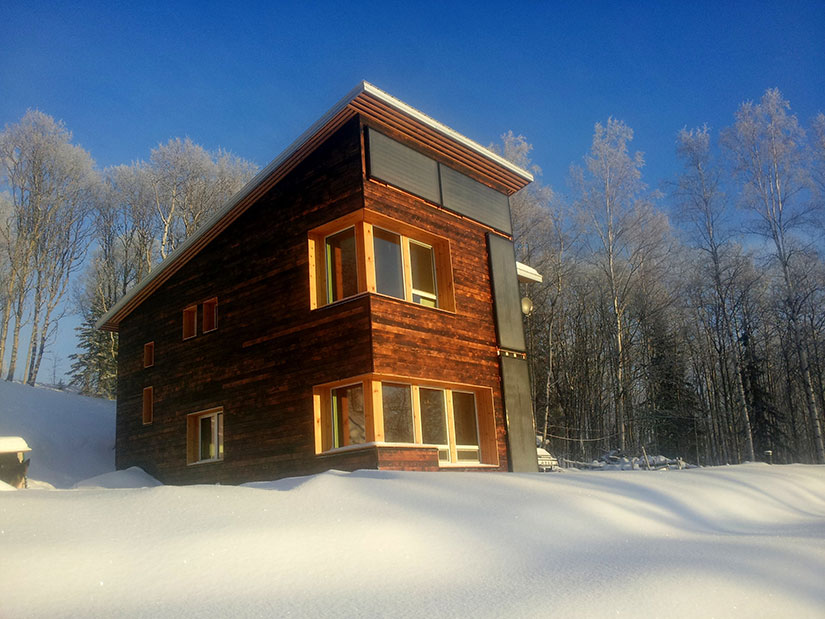Ice Breaker: Q&A With Director of NREL’s Alaska Campus

Originally a mechanical engineer, Bruno Grunau now spends his days testifying before Congress, meeting regularly with the Alaska governor’s office, and learning from Alaska’s utilities, communities, and Indigenous people whose ancestors have lived here for thousands of years.
Grunau is the regional director of Applied Research for Communities in Extreme Environments at the National Renewable Energy Laboratory's (NREL's) Alaska Campus. We caught up with him to debrief the recent Alaska Sustainable Energy Conference and find out what is in store for the nation’s only Arctic state.
What was NREL’s role at the Alaska Sustainable Energy Conference?
Alaska is harnessing renewable resources and energy efficiency as an answer to economic empowerment and energy independence. The governor hosts this conference to convene energy sectors leaders, investors and innovators, state and federal agencies, and researchers like me to plan a long-term future for the state’s energy security.
NREL Director Martin Keller moderated a panel at the May 2024 conference, and NREL was well represented among the attendees and presentations. Did you know that when COVID-19 protocols softened, Alaska Governor Dunleavy was the first visitor knocking on NREL’s door for a meeting? We now meet with the governor’s office twice a month.
What do we know about renewable energy opportunities in Alaska?
Alaska has strong untapped potential. For example, the offshore marine energy potential in the Lower 48 states totals about 1,700 gigawatts of electricity. Not bad. But Alaska has more than twice as much, according to a recent assessment of wind, wave, and tidal energy resources that NREL performed for the U.S. Bureau of Ocean Energy Management. The Cook Inlet has some of the strongest tides in the world! Of course, we need to figure out how to transmit marine energy to the people, businesses, and services that need it, but that level of power would support all North America.
Wow, that’s a lot. What else makes Alaska’s energy system unique?
Rather than a centralized grid, Alaska’s energy system is more like an extension cord running through the main population centers. The Railbelt power grid that runs from Fairbanks through Anchorage to the Kenai Peninsula represents 75% of Alaska’s electric load. We’ll need to make significant transmission upgrades to support the projected trend towards greater electrification—reinforcing the infrastructure for increased flow of electrons from devices like electric vehicles and heat pumps.
Does integrating renewables make financial sense?
The Governor’s Office asked NREL to explore the economic and reliability implications of powering the Railbelt on 80% renewable energy. In our models, the expenses in capital costs are outweighed by the estimated $100 million saved per year in fuel costs, and supply and demand can be managed reliably with the appropriate system engineering. Associated benefits include job creation, improved air quality, and stabilized rates decoupled from the volatile fuel market.
How do rural Alaskans get power?
Apart from the Railbelt population, Alaska has about 225 rural, largely Indigenous communities, which are essentially diesel-powered microgrids. These towns are 225 opportunities to explore different ways to decarbonize, and it’s already happening in exciting ways. I think there is big potential to harness solar, wind, and hydropower, coupled with energy storage, and exciting options for hydrogen.
How does NREL collaborate with Indigenous Peoples of Alaska?
We work with communities that have lived in this landscape for over 10,000 years so our approach is always to work in partnership to understand their needs, provide appropriate support, and work with them to merge their traditional knowledge with the latest available and appropriate technology. One example is our collaboration with the Asa'carsarmiut Tribe in Mountain Village to address housing insecurity while codeveloping modular, energy-efficient construction designs.
The vision of NREL’s Alaska Campus is to integrate scientific research and cultural knowledge to unleash a sustainable and equitable energy transition, with an emphasis on rural, remote, and islanded communities in the most extreme environments in the world. This can mean Arctic communities although the solutions are replicable in islanded communities and extreme environments all over the world.
What are some technologies you’re excited about?
In Alaska, 80% of our energy use goes toward space heating. We have some heat pumps in the lab that work in minus 30 degrees Fahrenheit—technology that did not exist 10 years ago. But the cheapest kilowatt-hour is the one you never used, so the researchers here specialize in building envelopes, optimized health, durability, and energy efficiency that can still handle Arctic conditions.
By building a net-zero home, you are a great ambassador for energy efficiency.
Yes, we were one of the first essentially net-zero-rated houses in Alaska. It is a way of living our values, but everything we put in has paid for itself. My wife is an architect, and I had an engineering background to draw on. One of my first projects at the lab in Fairbanks was to evaluate a cellulose-based insulation material, which is primarily made from recycled paper that preserves heat yet allows vapor to move through the wall. This is important because a lot of housing issues up here stem from condensation and mold. We persuaded the builder to install this experimental wall system in our home and it became his go-to material since it is easy to make locally.
Grunau and his wife designed one of the first essentially net-zero-rated houses in
Alaska. Photo from Bruno Grunau, NREL
Has the unique home impacted your family life?
I have two kids who grew up steeped in the values of sustainability, and they now champion it themselves. Russell, our 8-year-old, is set on building robots to save the world from climate change, and Annabelle, age 11, was recently selected to participate in a climate science competition hosted by NASA. I was lucky enough to be her chaperone to the Jet Propulsion Lab for the award. I am privileged to be around so many people doing amazing work both at home and at NREL.
Learn more about NREL's active projects in Alaska. Subscribe to NREL’s energy systems integration newsletter for more Q&As with researchers, and browse open positions to see what it is like to work at NREL.

